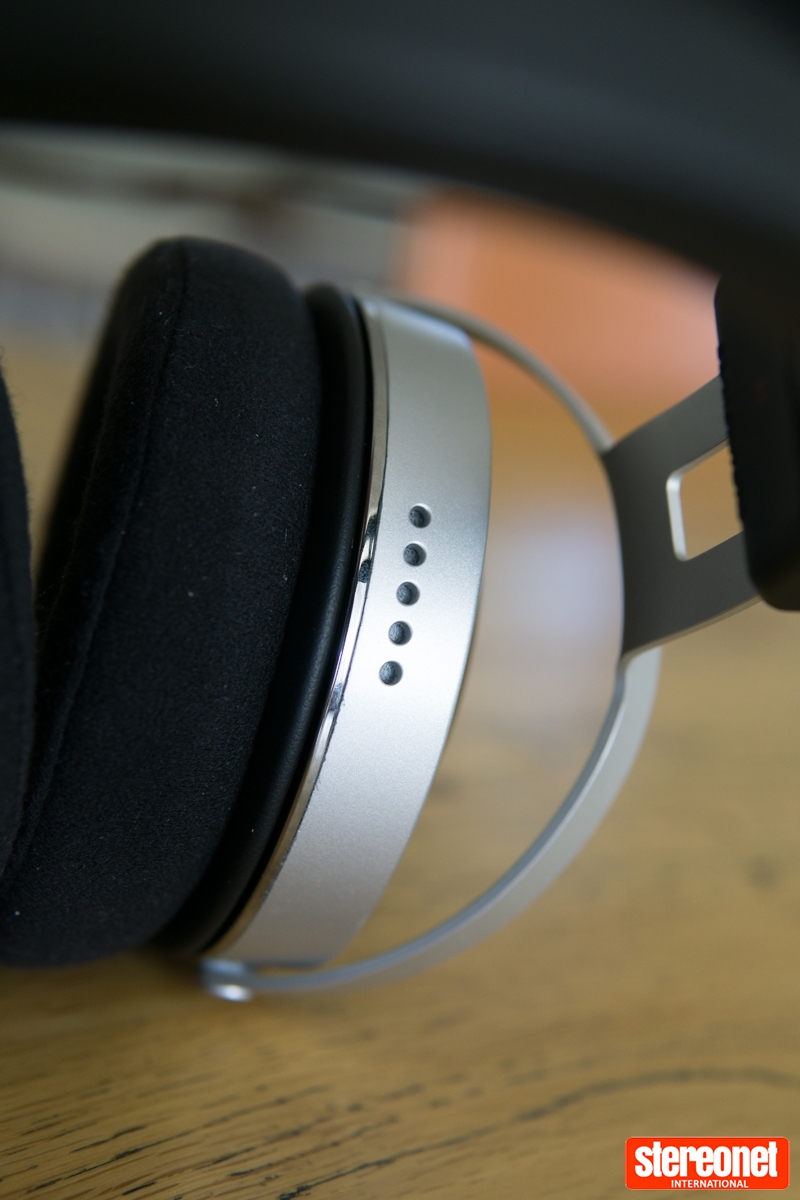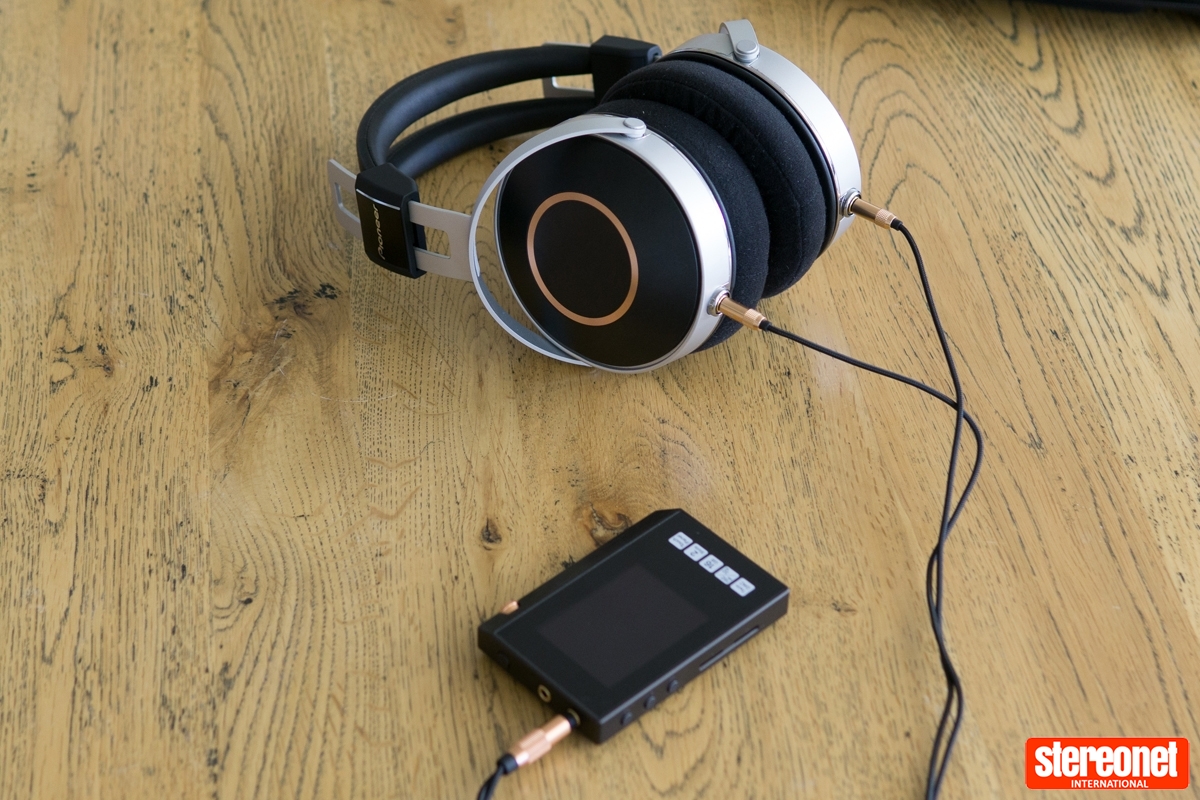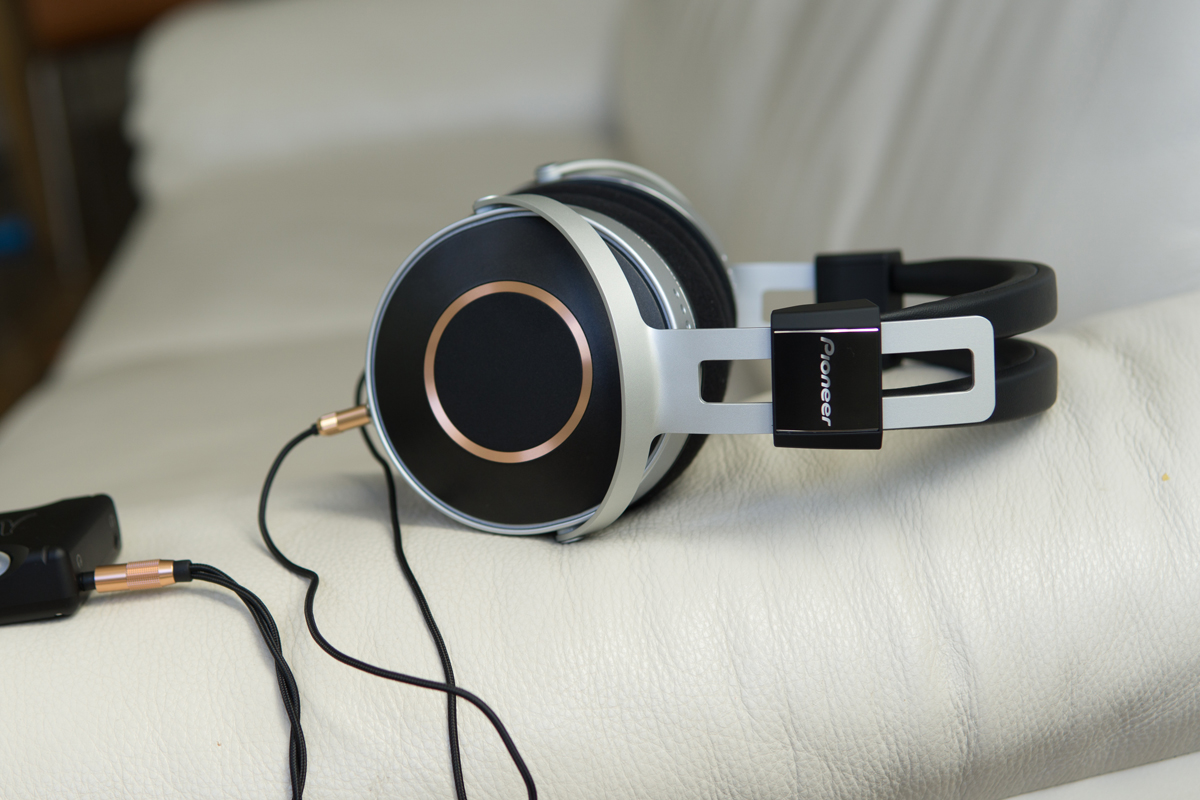REVIEW: PIONEER SE-MONITOR 5 HEADPHONES

The flagship headphone market is getting bigger and bigger every single day, and I could not be happier as a result. In 2017, Pioneer released their new SE-Monitor 5 headphones which we take a closer look at here.
PIONEER
SE-Monitor 5
Over Ear Headphones
The flagship headphone market is getting bigger and bigger every single day, and I could not be happier as a result.
In 2016, Pioneer dipped their toes into the flagship headphone arena with the SE-Master 1, priced at US $2500.
In 2017, Pioneer changed gear slightly with the new SE-Monitor 5 headphones. Instead of an open-back design, this release borrows driver materials and technology from the SE-Master 1, but also features brand new proprietary 50mm drivers, which are housed inside a closed-back design.
Priced locally at $1099 RRP, the SE-Monitor 5 is rubbing shoulders with the likes of the Fostex TH-610 ($999 RRP), the OPPO PM-2 planar magnetics ($1,099 RRP), and the Sennheiser HD700 ($1099 RRP).
Packaging and materials

Pioneer knows how to package their products, and the SE-Monitor 5 is no exception - both stylish and functional. Upon opening the hinges of the black presentation box, you will find the headphones sitting on a bed of soft black foam. Upon lifting them out, a compartment of the following accessories is revealed:
- Two different styles of pads (leather and velour)
- 3-metre dual-wire braided cable (Unbalanced)
- 1.6-metre dual-wire braided cable (Unbalanced)
- 1.6-metre dual-wire braided cable (Balanced)
- Carrying pouch
- Gold-plated 3.5 mm to 6.3 mm plug adapter
Build

Just like the SE-Master 1 release of 2016, the SE-Monitor 5 has impeccable build quality. Before even placing the headphone on, it is hard not to be taken in by the solid materials, unique aesthetic and premium feel of these cans.
Made almost entirely of magnesium alloy (not plastic), the assembly is incredibly sturdy, and doesn’t creak or flex at all when being moved or repositioned.
Weighing in at 480g, they are only 20 grams heavier than the SE-Master 1 and are almost 100 grams heavier than the Fostex TH610 (382 grams). At nearly half a kilo, it's not exactly a small or lightweight headphone - they were absolutely designed for home use.
The earpads are user replaceable, and the cable doesn’t have any locking mechanism - just a simple tug will remove them.
The outside of the cups has a sleek satin-like black finish, with a bold bronze ring hinting at where the driver sits inside. The colouring is consistent through the whole headphone - the headphone connectors and cables all follow this black and bronze aesthetic.

On the top of the cup, there are five neat holes - these provide ventilation for the ported drivers inside.
The materials and build quality on these headphones are absolutely first class, and downright stunning. I couldn’t fault the look and build of these, even if I tried. For the price point, they certainly look and feel the part.
Inside the headphone
Each earpiece contains a dynamic 50mm custom built cellulose nanofiber driver, which is, get this ... "built from organic wood pulp, refined on a nanoscale.”
Pioneer has also used their extensive loudspeaker enclosure research and employed it when designing these cups. Pioneer says that:
Headphone housings are made wide to expand main chamber volume and allow for a thicker housing mold, taming resonance. Main chambers have unique sculpted diffusers that disperse sound pressure into ported sub-chambers relieved by vents. The patented design reduces sound pressure level behind the driver to assure taut, clean, well-defined bass. Further, the system attenuates sound leakage.
It is not just the enclosures that have had a lot of thought put into them, but also the driver assembly itself. The back end of the drivers is held firmly in place by a magnesium alloy bracket, which is fastened to the magnesium alloy basket with screws (no glue).
A few of the same design principles from the SE-Master 1 flagship are evident here, including the design of the driver housings to ensure vibrations and resonance are kept to an absolute minimum throughout the entire enclosure.
Using the headphone

I tested the unbalanced cables with my trusty Chord Mojo, as well as the headphone port on my Samsung Galaxy Note 8.
The Balanced cables were tested with a Pioneer XDP 30R.
Rather than the larger 4-pin XLR version, the balanced cables are the 2.5mm 3-pole variety which allows for more compatibility with a lot of the portable players on the market that employ balanced connections. Many balanced desktop amplifiers will require an adapter.
With an impedance of just 40 ohms, plus the seriously sensitive drivers, these are incredibly easy to drive - even from just a humble smartphone. You won't need a powerful or dedicated amplifier to enjoy these properly.
While half a kilo might sound heavy, the weight distribution of the headband does an ample job of ironing out any hot spots and keeps things evenly balanced. The cups are also held nice and tight to the head, but not tight enough to keep them clamped on if you are known to vigorously shake your head around when listening to music.
Replacing the pads is not the easiest task in the world. Pioneer has adopted the Denon school of pad swapping, where each pad has a lip which is manually pulled onto the cup. Perhaps I have been spoiled by the ease of pad swapping found on recent Bowers & Wilkins releases (magnetic), but it did take me quite a few minutes to swap the pads around. Though I must add, the velour pads were much easier to get on compared to the leather ones.
I was able to wear these headphones comfortably for many long listening sessions, spanning several hours and without any discomfort at all!

Sound
Listening in balanced mode does not offer any more or less headroom or sensitivity compared to unbalanced mode in my opinion - nor does it increase the noise floor, or introduce any unusual distortions in the frequency response.
After my experience in 2016 with the Pioneer SE-Master 1, I was expecting its new closed-back sibling to give plenty of earth-shattering bass and some intense treble – but I was surprised to find almost the opposite.
The bass on the Pioneer Monitor 5 is lighter, more gentle, controlled, and smooth. There isn’t as much slam or punch to the midbass as the Fostex TH-X00 series, but it’s also not rolled-off, either. The sub-bass extends incredibly far and retains plenty of detail.
Despite having large drivers and a closed-back design, these are certainly not headphones for the basshead.
The midbass is more forward and present than the sub-bass, but only slightly. With little unwelcome bleed into the lower midbass, the entire low-end response is nicely balanced with the rest of the mix – and is very clean.

Evidence of this balance can be found when listening to Far Nearer by Jame XX. The strong bass notes in this track will often be overpowering with basshead cans, but not so with the SE-Monitor 5. They feel entirely stabilised and civil, letting the haunting vocals and detailed steel drums ring through effortlessly. The neutral signature and detailed nature of these headphones are demonstrated neatly with this track.
The soundstage is also quite remarkable for a closed-back headphone, and surprisingly, they exhibit a lot of tonal and spatial characteristics like open-backed headphones.
A great example of this is demonstrated competently when listening to Wax & Wire by Loch Lomond. Every single instrument and sample is clearly and evenly defined, and has a precise location in the mix which is easily identified with these headphones. Even the gentle guitar plucking which can often be lost in the mix is easily audible here.
These headphones strangely seem to remind me of the sound signature of Sennheiser's HD600 and HD650. Plenty of air, gobs of detail, no overpowering midbass, and pinpoint accuracy.
Much like the Sennheiser twins, the SE-Monitor 5 will also reveal plenty of artifacts in poor quality files. If you are a fan of the classic midrange Sennheiser releases, you might also find yourself becoming a fan of these headphones too.
It is worth mentioning that the velour pads present the mids ever so slightly more forward, while the leather pads have slightly more bass. But the changes are very subtle, and comfort is the main difference between the two. My personal preference is the velour pads. I appreciate being given a choice between the two options.

Conclusion
The SE-Monitor 5 is a strong release from Pioneer at this price point with an undisputed high-end and premium build, and the use of excellent materials.
The sound is much more relaxed than the Pioneer SE-Master 1 headphones with a mostly neutral signature with some added warmth.
If you are looking for a closed back flagship which is easy to drive, has stacks of detail and a neutral tone, then the SE-Monitor 5 ticks the boxes.
Offered at $1,099 RRP they are well priced, and I certainly recommend you audition them for yourself.

Specs
- Headphone Type: Fully-enclosed Dynamic Headphones
- Driver Units: 50 mm Cellulose Nano-Fiber Wide-Spectrum Driver
- Impedance: 40 Ohms
- Frequency Response: 5 Hz–85 kHz
- Sensitivity: 99 dB
- Maximum Input Power: 1,000 mW
For more information visit Pioneer.
Further reading: Headphones Discussion Forum
Matthew Jens
Constantly keeping himself busy, Matthew is a production manager, Brazilian jiu-jitsu blue belt, Head-Fi fanatic, coffee enthusiast and all-round cool Dad.
Posted in: Headphones
JOIN IN THE DISCUSSION
Want to share your opinion or get advice from other enthusiasts? Then head into the Message
Forums where thousands of other enthusiasts are communicating on a daily basis.
CLICK HERE FOR FREE MEMBERSHIP
Trending
applause awards
Each time StereoNET reviews a product, it is considered for an Applause Award. Winning one marks it out as a design of great quality and distinction – a special product in its class, on the grounds of either performance, value for money, or usually both.
Applause Awards are personally issued by StereoNET’s global Editor-in-Chief, David Price – who has over three decades of experience reviewing hi-fi products at the highest level – after consulting with our senior editorial team. They are not automatically given with all reviews, nor can manufacturers purchase them.
The StereoNET editorial team includes some of the world’s most experienced and respected hi-fi journalists with a vast wealth of knowledge. Some have edited popular English language hi-fi magazines, and others have been senior contributors to famous audio journals stretching back to the late 1970s. And we also employ professional IT and home theatre specialists who work at the cutting edge of today’s technology.
We believe that no other online hi-fi and home cinema resource offers such expert knowledge, so when StereoNET gives an Applause Award, it is a trustworthy hallmark of quality. Receiving such an award is the prerequisite to becoming eligible for our annual Product of the Year awards, awarded only to the finest designs in their respective categories. Buyers of hi-fi, home cinema, and headphones can be sure that a StereoNET Applause Award winner is worthy of your most serious attention.























